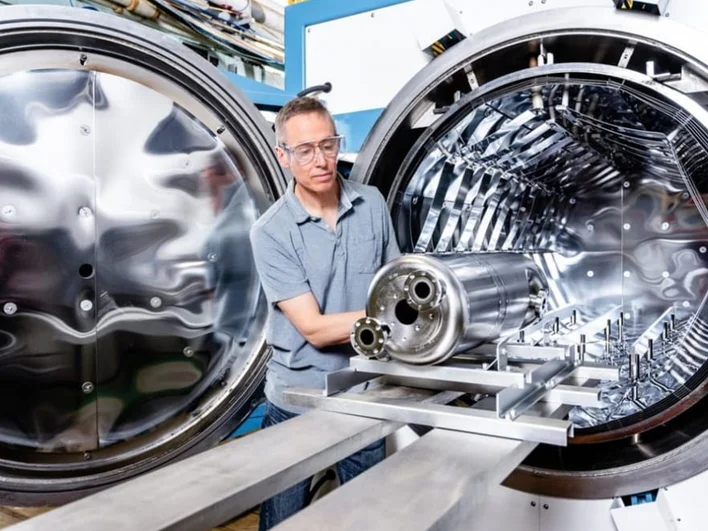A groundbreaking shift in nuclear waste processing is underway in the United States — and it’s all about getting smaller. Researchers at Argonne National Laboratory and Fermilab are developing a miniature particle accelerator, roughly the size of a coffee can, that could transform how the country handles radioactive waste.
Backed by a $3.2 million grant from the U.S. Department of Energy, this innovation aims to replace massive, car-sized accelerators with compact, efficient devices that can be deployed directly at nuclear sites — eliminating the need for expensive, long-term waste storage facilities.
How It Works
The key to this miniaturization lies in a new superconducting chamber design. Traditionally, these chambers used pure niobium — a costly metal that requires heavy cooling with liquid helium. The new approach uses a thin coating of niobium-trilead, reducing both cost and cooling needs.
Instead of relying on a single, centralized cooling system, the device features dozens of 10-watt cooling modules distributed along its body. This setup not only keeps the size down but also improves reliability: if one module fails, the others keep the system running without interruption.
Accelerating Nuclear Decay
At the core of this technology is proton beam activation. When protons strike a lead target, they release neutrons. These neutrons interact with radioactive isotopes in nuclear waste, accelerating their decay and turning them into less harmful materials. The result is waste that loses its radioactivity much faster and doesn’t require storage for thousands of years.
With over 90,000 tons of spent nuclear fuel currently sitting in storage across the U.S., this innovation could dramatically change the country’s waste management strategy — allowing on-site processing at nuclear power plants and cutting down the risks and costs of transporting radioactive materials.
Challenges and Future Outlook
Applying the niobium-trilead coating evenly to the chamber’s complex interior remains a technical challenge. Fermilab engineers are improving a method called evaporative diffusion, which aims to lay the coating smoothly and without gaps — a critical factor for ensuring the system works efficiently.
But if successful, this project could lay the foundation for a scalable, decentralized nuclear waste solution. Compact accelerators could be deployed to facilities nationwide, replacing bulky, expensive storage units with high-tech waste processors.
Supported by the ARPA-E program, which funds high-potential energy innovations, the initiative may also help make nuclear recycling economically viable — a long-term goal for both energy independence and environmental safety.
In the Bigger Picture
As the U.S. pushes forward with compact, on-site waste solutions, China is betting on massive X-shaped reactors in the race to lead next-generation nuclear tech. Whether through miniaturization or mega-scale systems, the global competition to revolutionize nuclear energy is heating up — and could redefine how we power the planet in the decades ahead.
